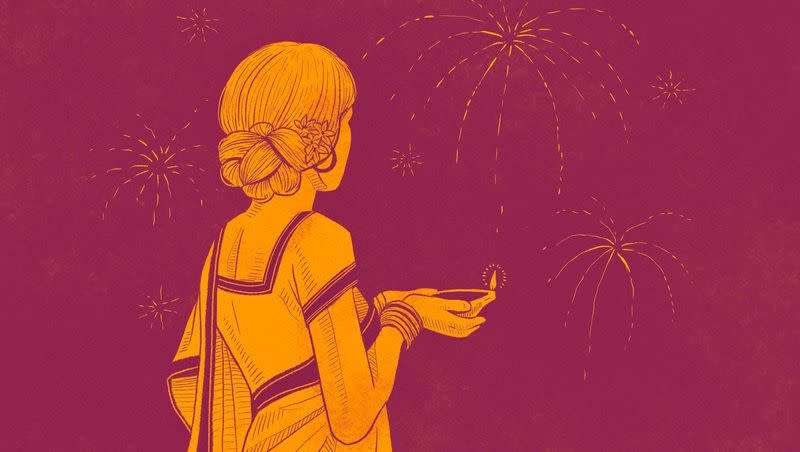What is the legend behind Diwali, the Hindu festival of lights?

Growing up in South Delhi, India, Diwali was easily my favorite holiday. In Christmas-like fashion, fairy lights enveloped homes and streets every year and presents for family, friends and neighbors sat in tall piles.
The word Diwali means “a row of lights” in Sanskrit, after all. Although I haven’t visited my homeland in nearly three years, I can’t help but fondly look back at the colorful traditions I was raised with.
If my sister, Kareena, and I didn’t put our things away, the Goddess Lakshmi and Lord Ganesha, the rulers of wealth and prosperity, wouldn’t visit our home, and my mother would scold us.
She always took on the duty of cleaning the house — from the ceiling fans to the over-filled closets — and my father helped.
The adults usually had a long to-do list before celebrations began. As for me, I would take on the task of creating a Rangoli, a traditional decorative art form where a design is created using colored powder or sand, spending all day outside the front door.
Why is Diwali celebrated? What is the legend behind the festival?
The story that my grandmother would tell me went something like this: Lord Rama, an incarnation of Lord Vishu, the god of protection, returned to Ayodha after 14 years of exile and the defeat of Ravana, a 10-headed king of demons.
The evil king had abducted Rama’s wife Sita, but on Diwali, Rama, Sita, Lakshmana, who is Rama’s brother, and Hanuman, a monkey man, who is “a symbol of strength and energy,” came back home, according to the BBC.
My grandmother’s beliefs are that of the North. Meanwhile, in South India, the defeat of the demon Narakasura at the hands of Lord Krishna is celebrated.
In the western parts of the country, the festival marks the day that Lord Vishnu chose King Bali, a demon, to rule the nether world, according to National Geographic.
The true story of Diwali changes with geographies and historical events. The report notes that even minority religions have their own Diwali legends — whether it’s Sikhs celebrating the 7th-century guru Hargobind’s release after imprisonment or Buddhists remembering the day as when Hindu Emperor Ashoka converted to the faith.
And of course, there is the romantic story of the Goddess Lakshmi choosing Lord Vishnu to be her husband on this night.
Although it’s unclear what the real origin story is, it’s safe to say that the festival is widely believed to mark the victory of light over darkness. It’s worth noting that Diwali also marks the new year, as it coincides with harvest season.
How to celebrate the festival of light
The best part about this holiday is that the festivities don’t start and end with Diwali day. The parties usually begin weeks before. People gather, exchange gifts, play card games and indulge in food.
“In particular, it is common to see Besan Ladoos given out — these are made out of chickpea, ghee, palm sugar and cardamom,” Shereen Bhalla, director of education at the Hindu American Foundation, told Good Housekeeping, adding that traditions may vary depending on the region.
On the day of the Diwali, devotees offer prayers to their gods. In my home, this begins with the Gayatri Mantra, a sacred chant that acknowledges the creation of all things.
My family would sit in front of the small temple in our home in the evening, with Kareena and I taking turns ringing a small bell while my mother led the prayers that echoed in the three-bedroom apartment.
As soon as the Puja would end, Kareena and I would rush out the door to spend the rest of the night burning firecrackers alongside our friends.

